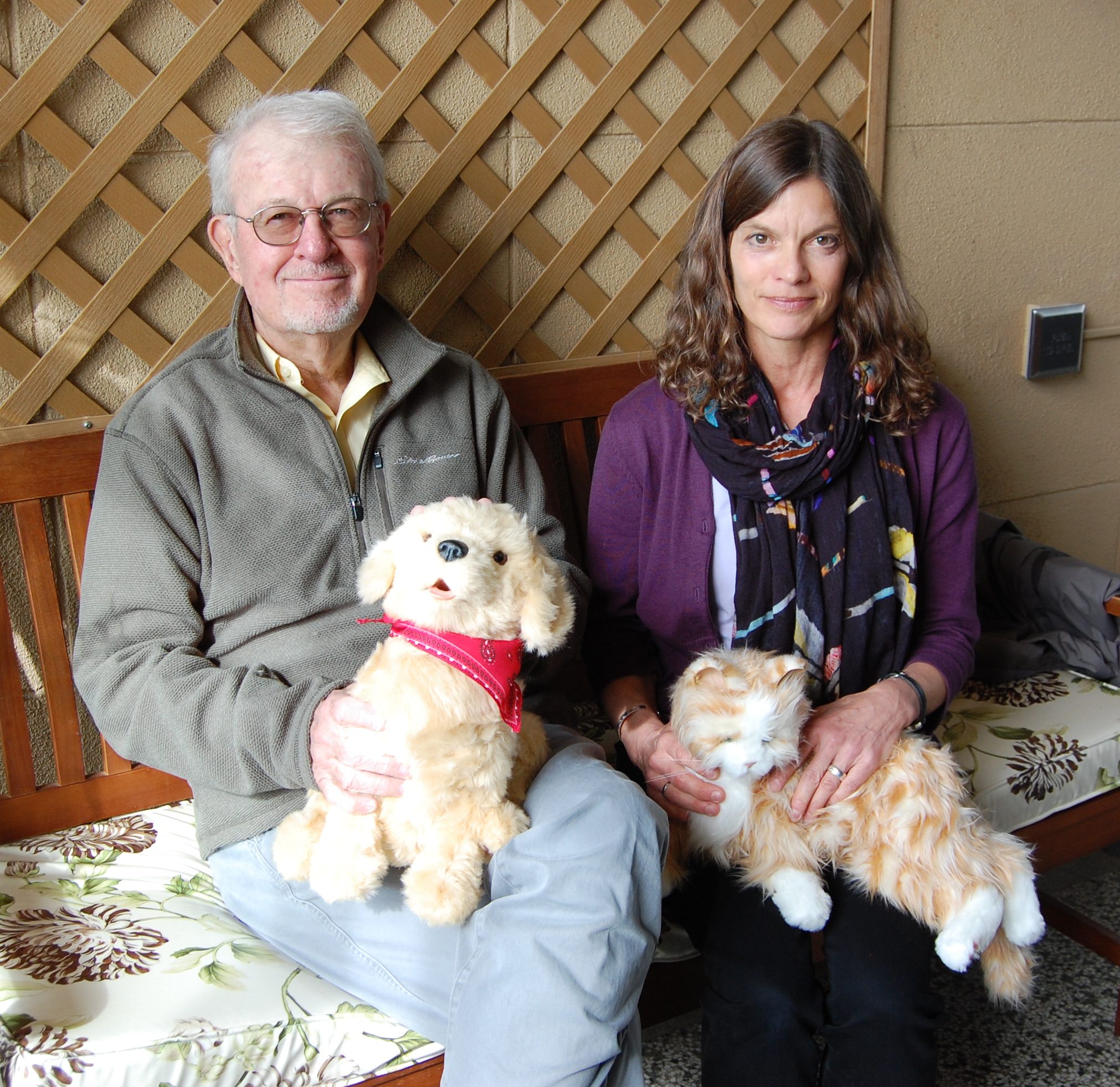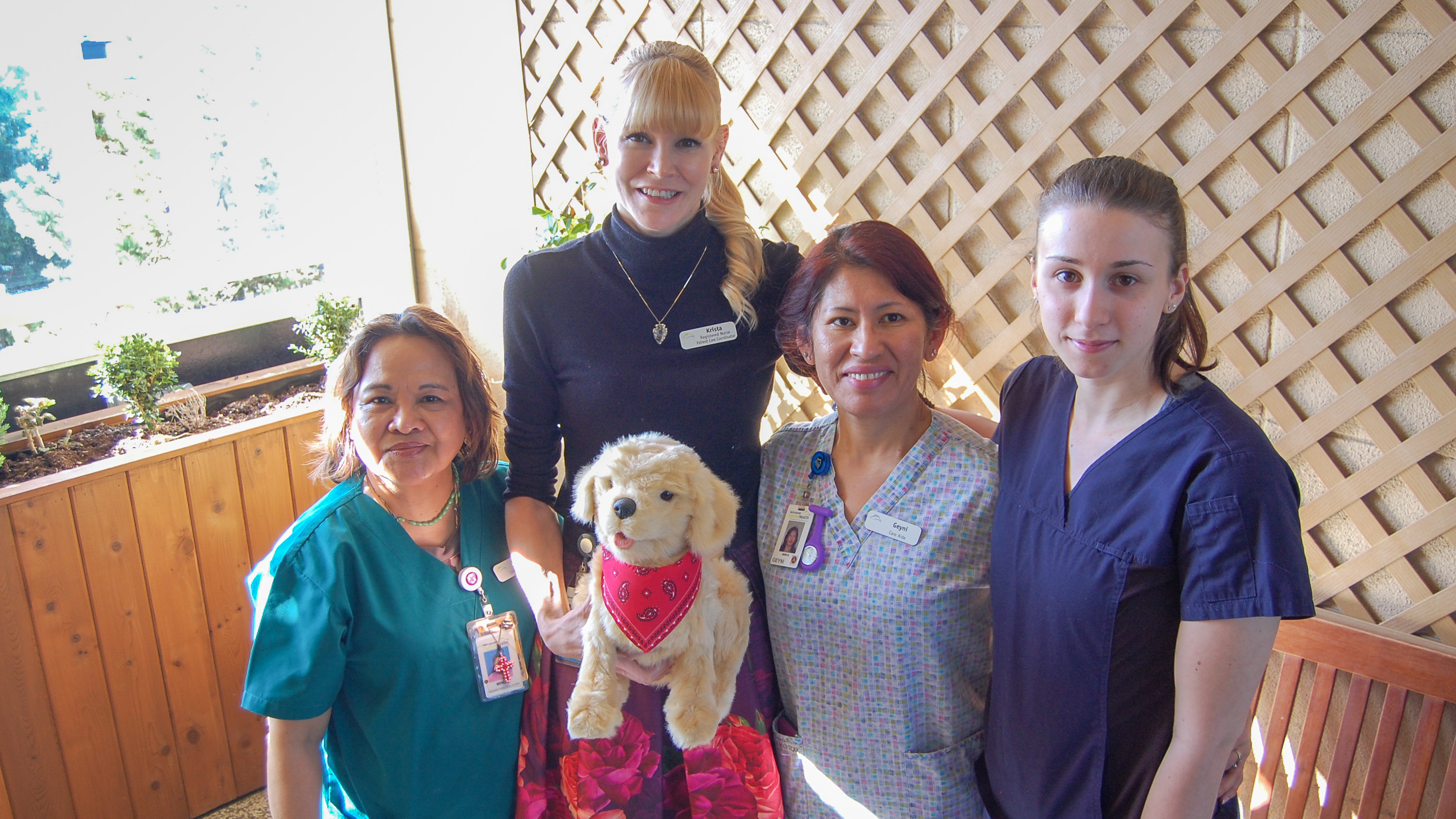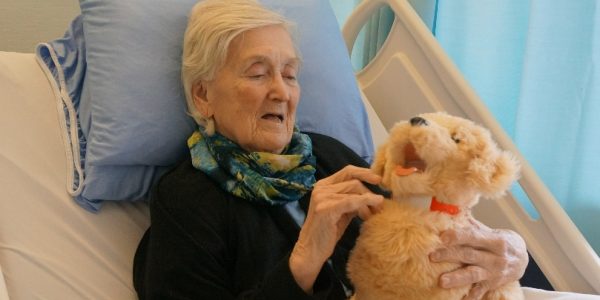Furry robo pets providing joy and comfort to patients at Lions Gate Hospital
When the clinical team on 4 West at Lions Gate Hospital trialled their first robotic pet dog with a patient with end stage dementia, the reaction was immediate.
“It was amazing to watch how the dog brought our gentleman back to life,” says Krista McPhail, Patient Care Coordinator on 4W. “Our patient who had not talked for months started talking to the dog, he petted it and told the dog that he was a good boy. He started to smile; it was really sweet to see how his quality of life improved through the robotic dog. When our patient passed away his dog was in his arms.”
Robotic companion pets have become increasingly popular for their ability to provide therapeutic comfort to people with dementia-related disorders. Due to cognitive disorders, patients are not able to take care of living pets. As a result, robotic pets have become widespread in hospitals and care facilities to achieve a better quality of life for patients during a very difficult time in these patients’ journey.
Following the success of the trial last fall, LGH has since provided 18 companion dogs and cats (a product of the toy company Hasbro) to patients thanks to the generosity of the Lions Gate Hospital Auxiliary, which purchased the $200 pets.

Bob Morrison and Lee Ann Lambert (co-president and vice president of the LGH Auxiliary respectively) with two of the 18 companion pets that were all purchased by the organization.
“If we know it is improving patient care, we are happy to help,” says Bob Morrison, LGH Auxiliary co-president. “As our population ages we will be facing more cases of patients with dementia-related disorders so we are pleased to purchase equipment that helps improve the patient care.”
When staff matched the pets with carefully selected patients on 4W, they observed improvements in patient communication, focus, mood and overall well-being.
“The patients light up and come back to life,” says Krista. “They are so amazed their pet can move and bark and respond to them. What it also does that is very important is it calms them down.”
How the pets work
Each dog or cat is designed to look, feel, sound and react like a real pet. They bark, purr and mew thanks to built-in sensor technology that allows them to respond to a person’s presence and their touch.
When a patient pets the pup’s cheek, it will nuzzle their hand. Pat the back of its head and the pup will move. When you talk to the pup, it will look toward you and respond with puppy-like noises.
Meet Shirley and Cleo
Patient Shirley M. was provided with a dog that she promptly named Cleo after a previous pet she owned. Ask Shirley about Cleo and a smile instantly spreads across her face. Shirley is happy to tell you everything that Cleo can do and how the pet works.
“She can do so many things,” says Shirley, petting Cleo. “It’s wonderful to have her.”
Like Shirley did, each patient names their dog or cat, and their animal is specifically for them. When the patient is discharged, the patient takes their dog or cat home with them to continue their journey together. Due to infection control guidelines, these pets are non-transferable.
“We hope we can continue with the companion pet program and we want to thank the Auxiliary for their generosity,” says Krista. “The pets really do make a difference.”

Staff on 4W with one of the companion pets given to select patients on the unit. L-R: Minda Lu, Krista McPhail, Gyni Shapiama, andCristina Liguori.

